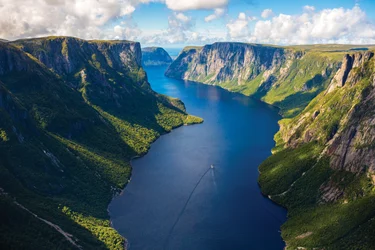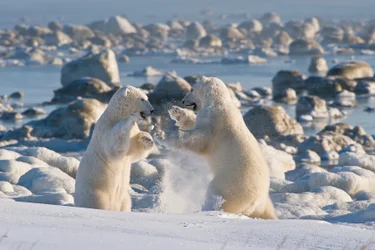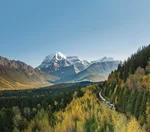6 Things You May Not Know About Grizzlies — and Their Cubs
Grizzly-bear watching is a bucket-list activity for many visitors to Canada. The only thing more incredible than seeing one of these awe-inspiring creatures in their natural habitat — while on an organized tour with an experienced guide, of course — is seeing a grizzly mom with her cubs.
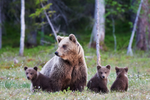
Most of Canada's 25,000 grizzlies are found in British Columbia, with 15,000 bears located close to the Pacific, around salmon spawning grounds. The remaining bears live in the Rocky Mountains of western Alberta, the Yukon, Northwest Territories, Nunavut, or northern Manitoba.
Learn more about the Canadian grizzly with these six facts.
Coastal B.C. is One of the Best Places to See Grizzlies and Cubs
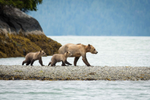
The Great Bear Rainforest stretches 250 miles along the central and northern coast of British Columbia from Knight Inlet to the Alaska Panhandle. On a trip here, you can see massive grizzlies feasting on salmon during the late summer through fall.
Knight Inlet Lodge, a floating resort accessible by float plane, offers a unique wildlife viewing experience. Stay at the lodge, take bear tours, go kayaking, hiking and more. It’s a premier destination if you want to maximise your chances of seeing grizzly bears. A trip to the lodge is featured in our Lords of the Wilderness Bear Viewing tour.
The Grizzly's Name Comes From its Appearance

Grizzly bears are a North American subspecies of the brown bear, and their colouring can be anywhere on the spectrum between light tan and dark brown. The name "grizzly" originally came from the lighter tips on the bear’s coat, which gives it a "grizzled" appearance.
A better way to distinguish a grizzly from other bears is the protruding hump on its shoulders, its dish-shaped face and short, round ears. If you are spending time in the Canadian Rockies, keep an eye out for these bears when you are hiking, biking and wildlife viewing.
Grizzlies Communicate with Sounds and Smells
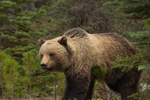
A grizzly mom will growl, moan or grunt to communicate with her cubs. While grizzly bears may rub their bodies on trees to scratch an itch, it's also a way to leave scent to let other bears know they were there.
You can hear more about grizzly bear behaviours and their natural habitat on a guided wildlife tour in Banff on our Canadian Rockies Discovery Tour.
Grizzly Cubs are Helpless

Grizzly moms come out of their winter slumber to give birth, usually to one to three cubs, before returning to sleep. Babies are initially hairless and toothless, and nurse for the first few months. When spring arrives, the cubs have opened their eyes, have grown teeth and fur, and are ready to leave the den with mom.
Grizzly Cubs Stay With Their Mom for Two Years
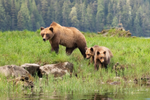
Cubs stop nursing after five months and then mom provides meals by foraging and hunting. As cubs need mom's protection from predators – such as other bears, cougars and wolves – they usually stay close for two to three years.
Grizzlies Eat Everything

Like most bears, grizzlies are omnivores, with a diet consisting of plants and animals, depending on what they can find. They dig, root, graze and hunt for their food, which can be nuts, berries, leaves, roots, fungi, insects, salmon and other fish, rodents, sheep, and deer.
Discover More
Discuss your Canadian train vacation with a local travel expert
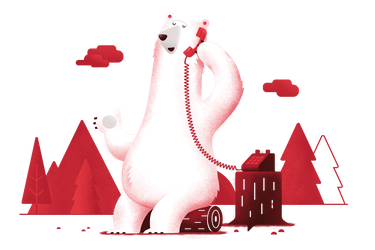

Current promotions
Sign up for special offers, monthly Canadian Insider tips, and vacation inspiration.
